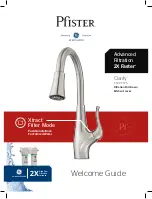
7 — CANopen COMMUNICATIONS
pg. 31
Curtis Model 3150R – Oct. 2022
MESSAGE CAN-IDs
The 3150R’s CAN messages are identified by 11-bit CAN IDs. The device does not support 29-bit
CAN IDs.
EXPEDITED SDOs
The least significant byte of an expedited SDO is known as the
control byte
. The following table
describes the control byte fields:
7
6
5
4
3
2
1
0
Command Specifier
0b
n
e
s
The following list describes the control byte:
• The
Command Specifier
field indicates the SDO’s transfer type. The following table describes
the transfer types:
Transfer Type
Value
Write data to a device
001b
Confirm a write
011b
Request data from a device
010b
Device responds with requested data
010b
Abort SDO
100b
• Bit 4 is always 0b.
• The values of bits 0–3 depend upon whether the SDO transfers data. If the SDO does not
transfer data, these bits are always 0b. If the SDO transfers data, the bit values are as follows:
–
n
indicates the number of unused data bytes.
–
e
= 1b, which indicates the message contains data.
–
s
= 1b, which indicates that the
n
field specifies the number of unused data bytes.
The following table lists the control byte values for the various transfer types:
Transfer Type
Control Byte
Write data to a device
Depends upon the data size:
• 1 byte = 2Fh
• 2 bytes = 2Bh
• 3 bytes = 27h
• 4 bytes = 23h
Confirm a write
60h
Request data from a device
40h
Device responds with requested data
Depends upon the data size:
• 1 byte = 4Fh
• 2 bytes = 4Bh
• 3 bytes = 47h
• 4 bytes = 43h
Abort SDO
80h













































